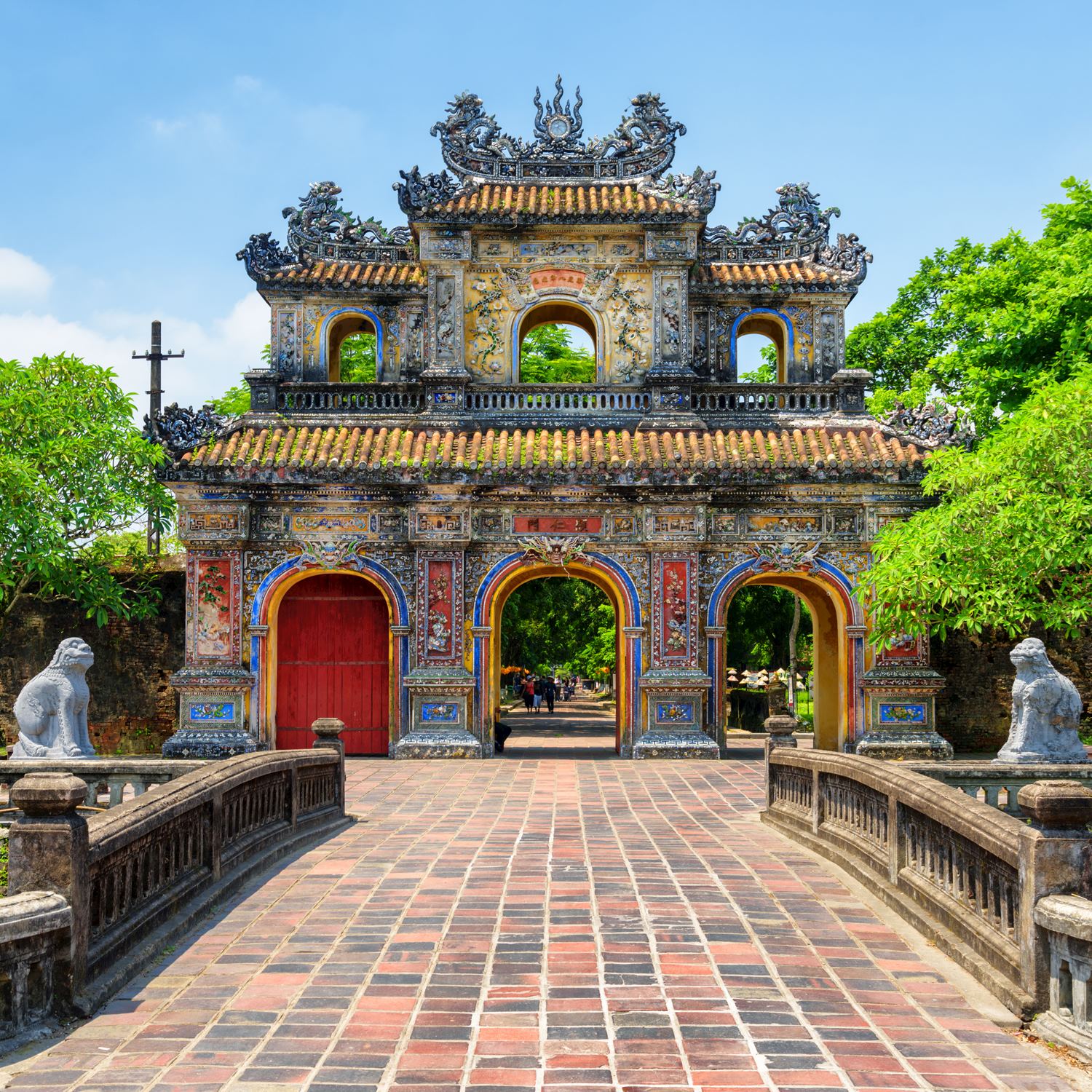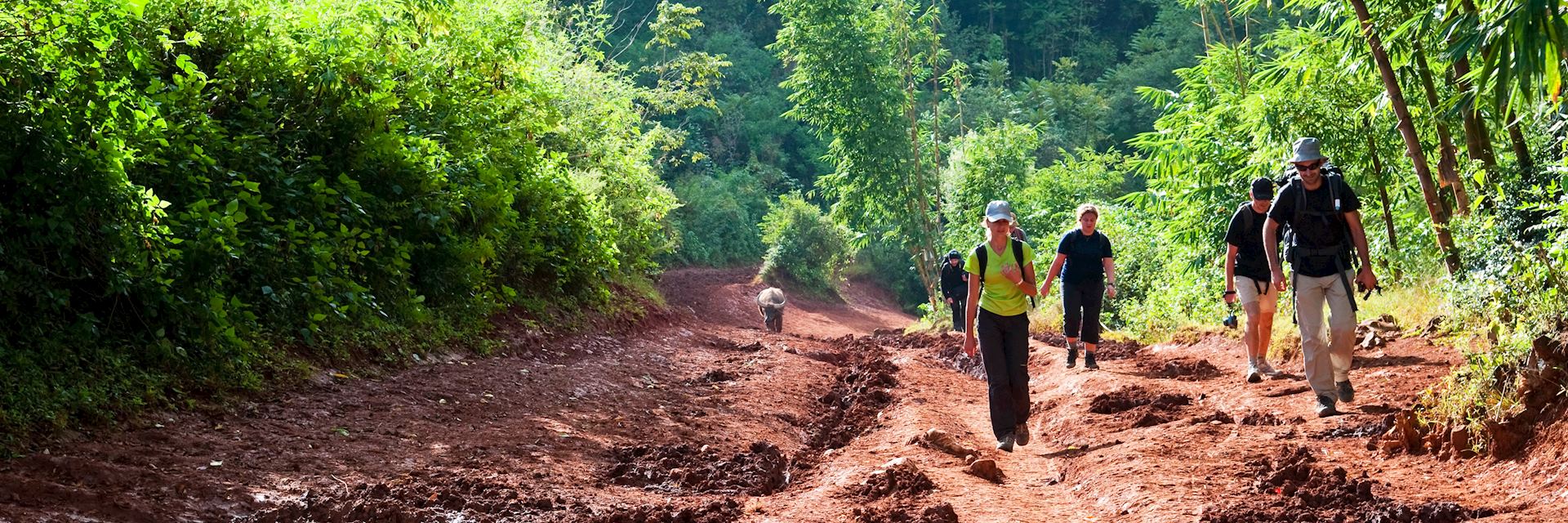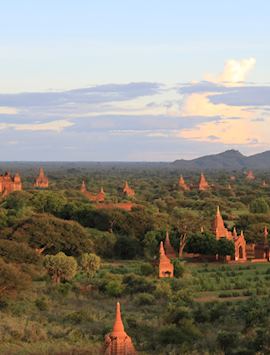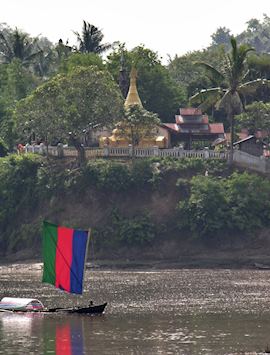By Myanmar specialist Will
As Myanmar continues to open up to visitors, so does its network of walking trails. Routes run through the whole of the country, from the Himalayan foothills in the north to the lower level rice fields of the south, with choices for hardy trekkers and occasional walkers alike. For more ardent walkers, a range of overnight treks exist, many with monasteries providing distinctive overnight accommodation.
Compared with the rest of Southeast Asia, Myanmar’s trekking paths are yet to be overwhelmed by the footfall of tourism, and they give access to otherwise unreachable local tribal groups. On past treks, my guide and I have found long sections of footpaths all to ourselves.

Trekking from Inle Lake to Kalaw
If you’re a first-time visitor to Myanmar, more likely than not your itinerary will include time in and around Inle Lake, where communities live on floating villages.
As well as exploring the water by boat, I’d encourage you to take to the area’s paths on foot. I'd suggest spending at least a couple of hours meandering in the surrounding countryside and farmland of Shan State, a plateau that extends all the way from northeast of Mandalay to China.
As you ascend the lake and look back on views of the traditional fishing villages grouped around its shoreline, you start to appreciate its scale and serenity.
With more time, you can trek for a full day, or even two.
Heading west from Inle Lake, it's possible to trek overnight to the former British hill station of Kalaw, or vice versa. On the route in-between, you'll pass through the villages of the Palaung, Pa-O, Taungthu and Danu tribes.
At the markets around the lake, you’ll start to recognise villagers by their clothes. The Pa-O are particularly striking, dressed in black that’s offset with a bright red turban. They live in traditional bamboo-built homes and work in the fields, sometimes joined by their children, who ride the buffalo.
There are a number of routes, with varying degrees of difficulty (your guide will be able to tailor your walk to your fitness level). One of the more challenging is between two villages — Baw Nin Khone, close to Kalaw, and Than Dang — along a shady tree-lined path where you can find respite from the sun.
Until recently, this trek has been one of few, if not the only, overnight trekking options in Myanmar. As such, it’s one of the more popular trails, although you are still unlikely to see other travellers on the route.
I'd advise making the most of the evenings and early mornings, before the day walkers set out and at a time when you'll have the trails virtually to yourself. The air is cooler and the dawning light or lingering light of dusk is better for photographing the bamboo groves and gnarled pine forests that the paths cut through.
The Tithein Monastery provides a rustic but friendly place to spend the night, where the monks will cook a simple meal of chicken curry, vegetables, tofu and rice for you and invite you into a way of life unchanged for generations.

Two-day trek from Pindaya
This pretty town, around a two-hour drive from Inle Lake, is best-known for its extensive cave network and the thousands of golden Buddha statues arranged inside. But, it’s also emerging as a walking and trekking destination.
The trails from Pindaya provide gentle walks into quieter, often more shaded areas of the Shan Hills. This is an important distinction, as many of the other trekking areas are exposed and the midday sun can be punishing.
A two-day trek with a local guide takes you high into the steeper hills around Ya Za Gyi village. The steepest trail requires you to be fairly fit and a little more adventurous, but there are some gentler inclines — it's worth discussing the options with your guide. The views down onto the surrounding settlements and Pindaya itself are the reward for your efforts. Bright turquoise and yellow crops blanket the landscape, contrasting with the reddish brown of the earth.
With a local guide, there may also be the opportunity to visit a school, and you’ll stay overnight in a monastery. Typically, the trek starts at around 10am and, depending on how quickly you go and how many people you stop to talk to on the way, you’ll finish at around 2pm the following day.

Monastery trek from Hpa-An
In the southeast of the country, between Yangon and Mawlamyine, Hpa-An is a growing centre for walking and trekking.
Rarely visited by outsiders to Myanmar, the capital of Kayin State is surrounded by limestone mountains, which hide caves holding devotional art in the guise of thousands of tiny clay Buddhas and carvings dating from the 7th century.
The crown of Mount Zwekabin rises out of the undergrowth of the lower slopes, capped by the golden stupas of a monastery. Overlooking the town, this landmark is a pilgrimage site for local people.
A reasonable degree of fitness is required to climb the steps to the monastery, but the walk is relatively short and takes around an hour. At the top, you'll be welcomed by the monks and on a clear day, as it was in my case, a view you can trace along the Salween River out to the coast.
Currently, there aren’t any overnight treks in this area, but this is likely to change in the not-too-distant future. In the meantime, if you have a full day your guide will be able to extend the Mount Zwekabin walk into a more challenging day trek.

Trekking around Hsipaw
A long-standing choice for walkers, the northern Shan town of Hsipaw lies on the Old Myanmar Road. This is a charming base from which to explore the surrounding hills on foot or you can venture out on boat trips stopping at local villages and riverside monasteries. Hsipaw was once the capital of an autonomous Shan state and still has a modest Shan palace.
Hsipaw sits in a valley, through which a river runs. The Hsipaw hills are stunning, with shades of yellow brightening the landscape. Corn and sesame are the main crops here and, until the end of November at least, the yellow “wild sunflower” adds to the colour palette.
It’s a five or six hour journey to the town from Mandalay, either by road or train via the Goteik Viaduct, which spans a 300-metre deep jungle gorge.
I’d use time spent in Hsipaw to include a walk in the fields around the town, and to trek then take a boat to the dramatic confluence of the Namtu and Dotawaddy Rivers.
There are some good, locally-owned riverside hotels in Hsipaw, from where it's possible to walk for just a couple of hours or take a full-day trek to waterfalls and riverside monasteries.
For longer treks, one of the best options is to head into the hills for an overnight stay in a pretty Palaung village. The accommodation is again simple, but as in the monastery options, you have a mattress, a blanket and a mosquito net — and the food prepared by your porters will definitely be a highlight of your trip.
It's likely that your guide will have been a novice monk in a monastery. Almost all Burmese men have a spell in a monastery, returning throughout their life to invest more time to their faith. Many will first visit as a child with their father. A number of the guides I’ve met have had short breaks from guiding in the past to return to their monastery, and they enjoy recollecting their experiences.
I also found it interesting to discover that Myanmar has many nuns who have chosen to dedicate their life to the Buddhist faith. Like their male counterparts, they also shave their heads but wear pink robes instead of orange. For women in Myanmar, the choice to become a nun is very much for life.

Trekking to the Padaung villages near Loikaw
The green hills of Shan State and the arid lands of Kayah meet at Loikaw, where mountain views frame communities of Burmese minority tribes.
Though this is generally a lesser-visited area, due to the distances involved and the fact that accommodation options are more basic, it’s where you can visit the Padaung villages. The women demonstrate their family’s wealth by wearing multiple gold or copper rings around their necks, which gradually lengthen them. The Padaung also take great pride in their music and songs, and traditional guitar music often drifts through the villages.
Whereas in Thailand visiting Padaung villages can seem a contrived experience, these settlements in Myanmar are authentic and have seen little contact with Westerners.
It’s a gentle 60- to 90-minute walk to the Padaung settlements, through the countryside that surrounds Thiri-Mingalar Taung Kwe Pagoda, the main temple in Loikaw.
I’d recommend stopping at the pagoda en route. Its golden spires, set on neighbouring rocks and joined by aerial walkways, rise up over different levels. Moving across the site from stupa to stupa, you can enjoy views in all directions over the town below.
Walking is the only way to reach the Padaung villages, which has the positive knock-on effect of keeping visitor numbers low. Once you’ve arrived, there are ways to intrude as little as possible on this long unchanged way of life. It’s essential to visit with a Kayan-speaking guide who’s sensitive to local customs. I always take food as gifts, rather than ‘paying’ the villagers with money for the visit.
Loikaw is situated four hours to the east of Myanmar’s new capital, Naypyidaw. Or you can travel by road and boat from Inle Lake, which takes around five hours. The contemporary Kayah Hotel provides a comfortable base and is my preferred place to stay in town.
It’s a requirement to obtain a permit before entering the region and you’ll encounter checkpoints where your paperwork will be checked.
Where to stay when trekking in Myanmar
Overnight treks often involve a stay in a working monastery, sleeping under a mosquito net with a mattress on the wooden floor. Basic though this is, it’s an experience in itself and allows you to undertake more involved routes over two days, rather than returning to town.
The monasteries are complexes of buildings, and you’ll stay in one of the rooms reserved for guests — just you, your guide and the porters.
The settings can be remote. On one stay, I vividly remember the noise of the forest animals and the brightness of the sky, undamped by artificial light.
The next day, your guide will introduce you to the head monk who’ll invite you to pay homage to the monastery.
Food is arranged and cooked by the porters. What my porter rustled up during my stay was hard to believe given his limited resources. A typical Burmese meal will be a smorgasbord of individual bowls of chicken curry, vegetables and tofu and accompanying rice, which appear out of nowhere.
Trekking with a local guide
A local guide is a must if you want to make the most of your time, as he or she will be able to introduce you to the local populations, point out significant landmarks and make sure you stay on the right track.
Local guides tend to speak Burmese and the regional dialect(s). I’d say they’re essential if you want to engage with the people you meet on your walks and to stop you inadvertently intruding when passing through traditional and remote villages.
There’s a great variety of terrain in Myanmar and you can choose to walk for a couple of hours or over a number of days.
Best time for walking and trekking in Myanmar
I'd recommend visiting between October and February, when the country’s cooler and drier. From March, both the temperature and humidity rise steeply and it’s much more likely you’ll get caught in heavy showers or even prolonged periods of rain.
Plan your walking & trekking holiday to Myanmar
Start thinking about your experience. These itineraries are simply suggestions for how you could enjoy some of the same experiences as our specialists. They’re just for inspiration, because your trip will be created around your particular tastes.
View All Tours in Myanmar





